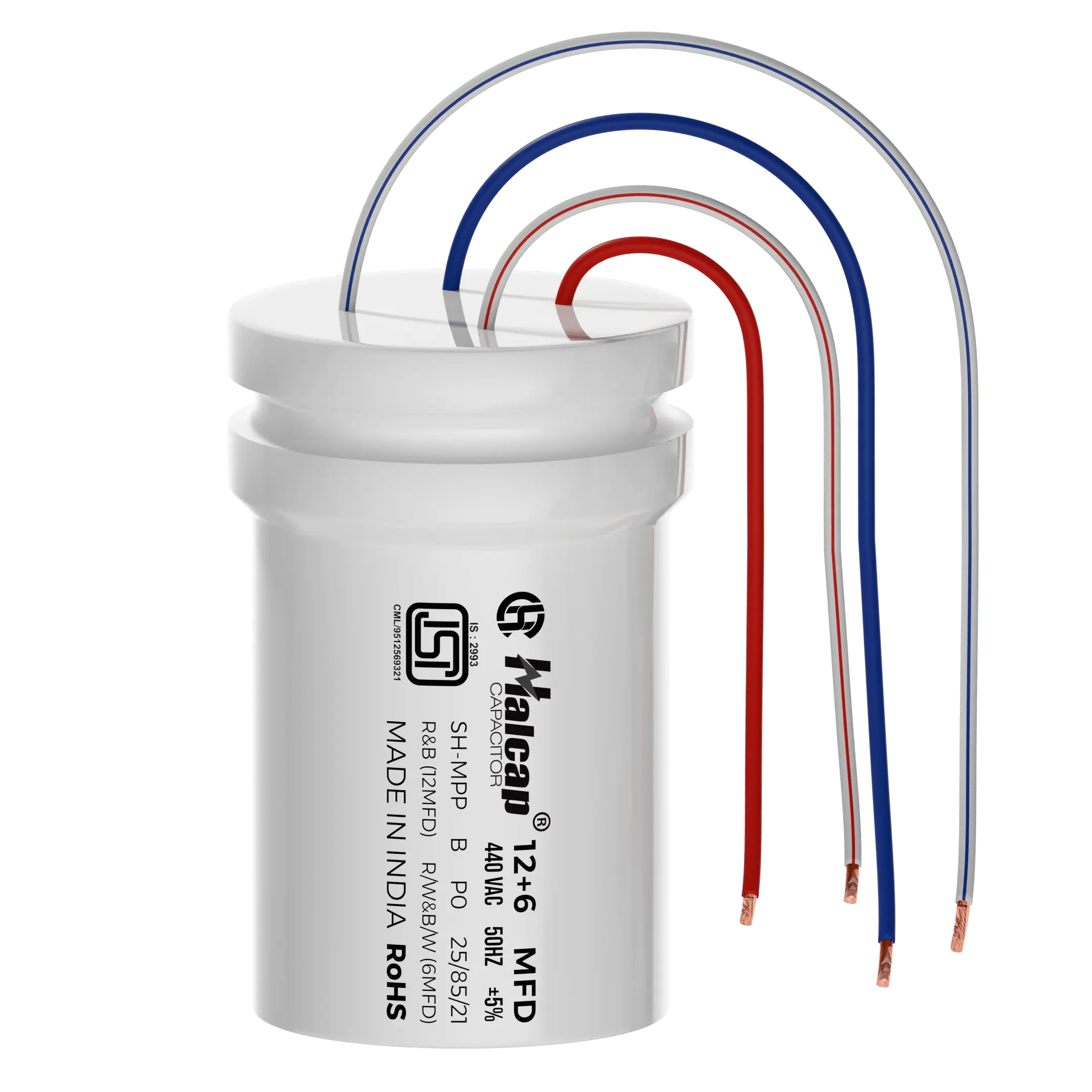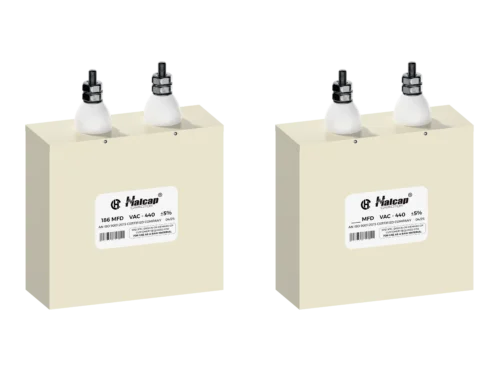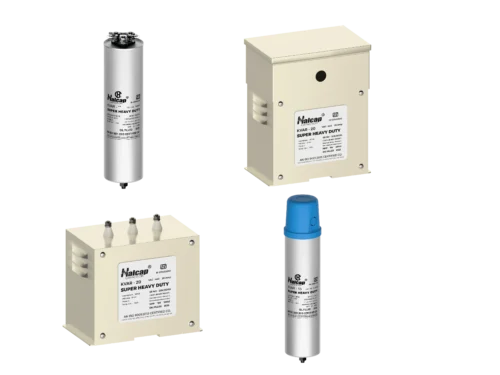Washing Machine Capacitor

Washing Machine Capacitor
Available in: Dry Type in PP Can
The Washing Machine Capacitors capacitors are engineered to enhance the performance and efficiency of washing machine motors. By reducing the ampere load, these capacitors ensure energy-efficient operation and prolonged motor life. Designed with advanced materials and safety features, they are ideal for both residential and commercial washing machine applications.
Technical Specifications
| Safety Class | S0 / P0 |
| Operational Life | 440V : (Class B/C/D) |
| Capacitance Tolerance | +5% |
| Rated Voltage VRms | 440Vac |
| Rated Frequence FR | 50/60Hz |
| Case Material | PP |
| Dielectric | MPP |
| Impregnation | Dry PU Resin (NPCB Compliant) |
| Max rate of change of voltage rise dv/dt: | 30V/µS |
| Loss factor (Tanδ)@20°C, 1kHz | 7 X 10-3 |
| Ac test Voltage terminal to terminal | 1.7 x VR, 2s (Routine test) |
Features
- Self- Headling Properties
- Low Dissipation Factor
- High insulation resistance
- Low ESR Value
- Long Life
Applications
- Motor Run Capacitor
- For Inverter input/output harmonic filtering & as motor run capacitor for washer
- Washing Machine
Faqs
What is a washing machine capacitor?
A capacitor is an electrical component used in washing machines to start and run the motor efficiently by creating a phase shift in the current.
Why is a capacitor used in a washing machine?
Capacitors are used to: Provide starting torque for single-phase motors. Improve motor efficiency. Ensure smooth drum rotation during wash and spin cycles.
Where is the capacitor located in a washing machine?
Usually found: Near the motor inside the rear or bottom panel. In semi-automatic machines, you may find two capacitors, one for each motor (wash and spin).
What happens if the capacitor fails?
If the capacitor is fault: The motor may not start. You may hear a humming noise without movement. The drum may rotate slowly or in only one direction.
How do I test a washing machine capacitor?
You can test it using: A multimeter with capacitance mode. A basic continuity test to check if it’s open or shorted. (Always discharge the capacitor before testing.)
Can I run the machine without a capacitor?
No. If the capacitor is missing or defective: The motor won’t start properly. It could cause overheating or damage the motor windings.
More Products
Lighting Capacitor
The Lighting Capacitors are engineered to improve the performance and reliability of lighting circuits, especially...
View ProductMS BOX TYPE CAPACITOR
The MS Box Type Capacitor is a durable industrial component for induction motors, offering stable...
View ProductPower Capacitor
The Power Shunt Capacitor is a vital component in modern electrical systems, designed to enhance...
View Product

